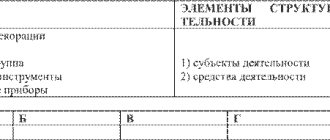See also: Adaptive system
Biological adaptation
(from Latin adaptatio - adaptation) - adaptation of the body to external conditions in the process of evolution, including morphophysiological and behavioral components. Adaptation can ensure survival in a particular habitat, resistance to abiotic and biological factors, as well as success in competition with other species, populations, and individuals. Each species has its own ability to adapt, limited by physiology (individual adaptation), the limits of maternal effects and modifications, epigenetic diversity, intraspecific variability, mutational capabilities, coadaptive characteristics of internal organs and other species characteristics.
The adaptability of living beings to the natural conditions of the external environment was recognized by people back in ancient times. Until the middle of the 19th century, this was explained by the original expediency of nature. Charles Darwin's theory of evolution proposed a scientific explanation for the adaptive process based on natural selection.
Adaptations of species within the same biocenosis are often closely related to each other (one of the most striking examples of interspecific coadaptation is the rigid connection of the structure of the organs of some species of flowering plants and insects to each other for the purpose of pollination and nutrition). If the adaptation process of a species is not in an equilibrium state, then the entire biocenosis can evolve (sometimes with negative consequences) even in stable environmental conditions.
The problem of defining adaptation
Philosopher Yu. Urmantsev points out that in terms of scope and content, “adaptation” is not only an interdisciplinary concept, but also a very complex one. He draws attention to the shortcomings of the definitions offered by encyclopedias, namely:
- Tautology and lack of indications of essential and specific features that would highlight adaptation;
- The definition of “adaptation” covers, as a rule, only one (usually medical-biological) type of adaptation from a many times larger number of existing ones;
- The resulting lack of a correct definition in general, and thereby of methodological guidance on possible ways of developing the doctrine of adaptation.
The process of development of life on earth presupposes the presence of adaptation in organisms. This adaptation begins with the most primitive species - adaptation to the environment and to existing conditions. The emergence and survival of organisms is possible only if the organisms correspond to the environment. Those organisms that develop the best forms of their preservation survive. Their development and the transition of organisms to a higher level are determined by the need for adaptation. Thus, evolution and adaptation are processes that are inseparable from each other.
Adaptation can also be understood as the ability of any system to receive new information to bring its behavior and structure closer to optimal. Systems are adaptive if, when there is a change in their environment or internal state that reduces their effectiveness in performing their functions, they react or respond by changing their own state or the state of the environment so that their efficiency increases. The term adaptation can be considered in three aspects:
- Adaptation as the property of a system to adapt to possible changes in functioning - adaptation system
; - Adaptation as the very process of adaptation of an adaptive system - in fact, adaptation
; - Adaptation as a method based on processing incoming information and adapted to achieve some optimization criterion - adaptation algorithms
.
More broadly, adaptations in biology
call the emergence and development of certain, specific morphophysiological properties, the meaning of which for an organism is associated with certain general or particular conditions of its abiotic and biotic environment.
Adaptation as an adaptive response
Adaptation as an adaptive response
, can be carried out at various levels:
- At the cellular level in the form of functional or morphological changes;
- At the level of an organ or group of cells that have the same function;
- At the level of the organism, both a morphological and functional whole, which is the totality of all physiological functions aimed at preserving vital functions and life itself.
Taking this into account, H. Hensel identifies different levels of adaptation processes:
- Habituation is the initial process of adaptation under the influence of short-term exposure to a stressor,
- Functional adaptation is a long-term state that occurs under the influence of certain stimuli, leading to physiological changes in human homeostasis,
- Trophoplastic adaptation is a further stage of adaptation processes and does not belong to the therapeutic field of rehabilitation medicine, since it causes morphological changes in the organs and systems of the human body.
The main content of adaptation, according to T. Pilat, is the internal processes in the system that ensure the preservation of its external functions in relation to the environment. If the structure of a system ensures its normal functioning under given environmental conditions, then such a system should be considered adapted to these conditions. At this stage, a dynamic equilibrium is established, in which physiological parameters change within normal limits. The body of a clinically healthy person with high adaptive abilities has a significant potential for self-regulation and self-healing. To maintain health, it is enough for him to lead a healthy lifestyle and follow the principles of a balanced diet.
At the same time, according to Yu. Malov, health or normality is a relatively stable state, but it cannot be maintained throughout life, because in nature there are no individuals absolutely adapted to a given environment. A long stay in the same conditions will sooner or later lead to the development of some disease, which is a mechanism for the elimination of the individual.
Physiology of adaptation
The word adaptation comes from the Latin adaptacio - adaptation. The entire life of a person, both healthy and sick, is accompanied by adaptation. Adaptation takes place to the change of day and night, seasons, changes in atmospheric pressure, physical activity, long flights, new conditions when changing place of residence..
In 1975, at a symposium in Moscow, the following formulation was adopted: physiological adaptation is the process of achieving stability in the level of activity of control mechanisms of functional systems, organs and tissues, which ensures the possibility of long-term active life of the animal and human body in altered conditions of existence and the ability to reproduce healthy offspring .
The entire sum of various effects on the human and animal body is usually divided into two categories. Extreme factors are incompatible with life; adaptation to them is impossible. In conditions of extreme factors, life is possible only if there are special means of life support. For example, flight into space is possible only in special spacecraft, which maintain the required pressure, temperature, etc. Man cannot adapt to the conditions of space. Subextreme factors - life under the influence of these factors is possible due to the restructuring of the physiologically adaptive mechanisms that the organism itself has. With excessive strength and duration of action of the stimulus, a subextreme factor can turn into an extreme one.
The process of adaptation at all times of human existence plays a decisive role in the preservation of humanity and the development of civilization. Adaptation to lack of food and water, cold and heat, physical and intellectual stress, social adaptation to each other and, finally, adaptation to hopeless stressful situations, which runs like a red thread through the life of every person.
There is genotypic adaptation as a result when, on the basis of hereditary mutations and natural selection, the formation of modern species of animals and plants occurs. Genotypic adaptation has become the basis of evolution because its achievements are fixed genetically and are inherited.
The complex of species-specific hereditary characteristics—the genotype—becomes the point of the next stage of adaptation acquired in the process of individual life. This individual or phenotypic adaptation is formed during the interaction of an individual with the environment and is ensured by deep structural changes in the organism.
Phenotypic adaptation can be defined as a process that develops during an individual’s life, as a result of which the organism acquires previously absent resistance to a certain environmental factor and thus gains the opportunity to live in conditions previously incompatible with life and solve problems previously insoluble.
At the first meeting with a new environmental factor, the body does not have a ready-made, fully formed mechanism that ensures modern adaptation. There are only genetically determined prerequisites for the formation of such a mechanism. If the factor does not act, the mechanism remains unformed. In other words, the genetic program of an organism does not provide for a pre-formed adaptation, but the possibility of its implementation under the influence of the environment. This ensures the implementation of only those adaptive reactions that are vitally necessary. In accordance with this, the fact that the results of phenotypic adaptation are not inherited should be considered beneficial for the conservation of the species.
In a rapidly changing environment, the next generation of each species risks encountering completely new conditions, which will require not the specialized reactions of ancestors, but the potential, remaining, for the time being, untapped opportunity to adapt to a wide range of factors.
Urgent adaptation is the body's immediate response to the action of an external factor, carried out by avoiding the factor (avoidance) or by mobilizing functions that allow it to exist despite the action of the factor.
Long-term adaptation - a gradually developing factor response ensures the implementation of reactions that were previously impossible and existence in conditions that were previously incompatible with life.
The development of adaptation occurs through a number of phases.
1. Initial phase of adaptation - develops at the very beginning of the action of both physiological and pathogenic factors. First of all, under the influence of any factor, an indicative reflex arises, which is accompanied by inhibition of many types of activities that manifest themselves up to this moment. After inhibition, an excitation reaction is observed. Excitation of the central nervous system is accompanied by increased function of the endocrine system, especially the adrenal medulla. At the same time, the functions of blood circulation, respiration, and catabolic reactions are enhanced. However, all processes occur in this phase uncoordinated, insufficiently synchronized, uneconomical and are characterized by urgent reactions. The stronger the factors acting on the body, the more pronounced this adaptation phase is. Characteristic of the initial phase is the emotional component, and the strength of the emotional component determines the “triggering” of autonomic mechanisms that are ahead of somatic ones.
2. Phase - transitional from initial to stable adaptation. It is characterized by a decrease in the excitability of the central nervous system, a decrease in the intensity of hormonal changes, and the shutdown of a number of organs and systems initially included in the reaction. During this phase, the body's adaptive mechanisms seem to gradually switch to a deeper, tissue level. This phase and the processes accompanying it are relatively little studied.
3. Sustainable adaptation phase . It is actually an adaptation - an adaptation and is characterized by a new level of activity of tissue, membrane, cellular elements, organs and systems of the body, rebuilt under the cover of auxiliary systems. These shifts provide a new level of homeostasis, an adequate organism to other unfavorable factors - the so-called cross-adaptation develops. Switching the body’s reactivity to a new level of functioning is not given to the body “for free”, but occurs with tension in the control and other systems. This tension is usually called the cost of adaptation. Any activity of an adapted organism costs it much more than under normal conditions. For example, physical activity in mountainous conditions requires 25% more energy.
Since the phase of stable adaptation is associated with constant tension of physiological mechanisms, functional reserves in many cases can be depleted, the most depleted link being hormonal mechanisms.
Due to the depletion of physiological reserves and disruption of the interaction of neurohormonal and metabolic mechanisms of adaptation, a condition arises that is called maladaptation . The disadaptation phase is characterized by the same shifts that are observed in the initial adaptation phase - again, auxiliary systems - breathing and blood circulation - come into a state of increased activity, energy in the body is wasted uneconomically. Most often, maladaptation occurs in cases where functional activity in new conditions is excessive or the effect of adaptogenic factors increases and their strength approaches extreme ones.
If the factor that caused the adaptation process ceases, the body gradually begins to lose the acquired adaptations. With repeated exposure to a subextreme factor, the body's ability to adapt can be increased and adaptive shifts can be more perfect. Thus, we can say that adaptation mechanisms have the ability to train and therefore the intermittent action of adaptogenic factors is more favorable and determines the most stable adaptation.
The key link in the mechanism of phenotypic adaptation is the relationship between function and genotypic apparatus that exists in cells. Through this relationship, the functional load caused by the action of environmental factors, as well as the direct influence of hormones and mediators, lead to an increase in the synthesis of nucleic acids and proteins and, as a consequence, to the formation of a structural trace in the systems specifically responsible for the adaptation of the body to this particular environmental factor. In this case, the mass of membrane structures responsible for the cell’s perception of control signals, ion transport, energy supply, i.e., increases to the greatest extent. precisely those structures that imitate the function of the cell as a whole. The resulting system trace is a complex of structural changes that ensure the expansion of the link that imitates the function of cells and thereby increases the physiological power of the dominant functional system responsible for adaptation.
After the cessation of the effect of this environmental factor on the body, the activity of the genetic apparatus in the cells responsible for the adaptation of the system decreases quite sharply and the systemic structural trace disappears.
Stress.
When exposed to extreme or pathological stimuli leading to tension in the adaptation mechanisms, a condition called stress occurs.
The term stress was introduced into medical literature in 1936 by Hans Selye, who defined stress as a state of the body that occurs when any demands are placed on it. Various stimuli give stress their own characteristics due to the emergence of specific reactions to qualitatively different influences.
There are successively developing stages in the development of stress.
1. Reaction of anxiety, mobilization . This is an emergency phase, which is characterized by disruption of homeostasis, increased processes of tissue breakdown (catabolism). This is evidenced by a decrease in total weight, a reduction in fat depots, and a decrease in certain organs and tissues (muscle, thymus, etc.). Such a generalized mobile adaptive reaction is not economical, but only emergency.
The products of tissue breakdown apparently become building materials for the synthesis of new substances necessary for the formation of general nonspecific resistance to a damaging agent.
2. Resistance stage . It is characterized by the restoration and strengthening of anabolic processes aimed at the formation of organic substances. An increase in the level of resistance is observed not only to this irritant, but also to any other. This phenomenon, as already indicated, is called
cross resistance.
3. Stage of exhaustion with a sharp increase in tissue breakdown. With excessively strong impacts, the first emergency stage can immediately go into the depletion stage.
Later works by Selye (1979) and his followers established that the mechanism of stress response is triggered in the hypothalamus under the influence of nerve impulses coming from the cerebral cortex, reticular formation, and limbic system. The hypothalamus-pituitary-adrenal cortex system is activated and the sympathetic nervous system is excited. The greatest role in the implementation of stress is taken by corticoliberin, ACTH, HST, corticosteroids, and adrenaline.
Hormones, as is known, play a leading role in the regulation of enzyme activity. This is important under stress conditions when there is a need to change the quality of an enzyme or increase its quantity, i.e. in adaptive changes in metabolism. It has been established, for example, that corticosteroids can influence all stages of the synthesis and breakdown of enzymes, thereby providing “tuning” of the body’s metabolic processes.
The main direction of action of these hormones is the urgent mobilization of the body’s energy and functional reserves, and there is a directed transfer of the body’s energy and structural reserves to the dominant functional system responsible for adaptation, where a systemic structural trace is formed. At the same time, the stress reaction, on the one hand, potentiates the formation of a new systemic structural trace and the formation of adaptation, and on the other, due to its catabolic effect, it contributes to the “erasure” of old structural traces that have lost their biological significance - therefore, this reaction is a necessary link in the integral mechanism adaptation of the organism in a changing environment (reprograms the adaptive capabilities of the organism to solve new problems).
Biological rhythms.
Fluctuations in the change and intensity of processes and physiological reactions, which are based on changes in the metabolism of biological systems, caused by the influence of external and internal factors. External factors include changes in illumination, temperature, magnetic field, intensity of cosmic radiation, seasonal and solar-lunar influences. Internal factors are neuro-humoral processes that occur in a certain, hereditarily fixed rhythm and pace. The frequency of biorhythms ranges from a few seconds to several years.
Biological rhythms caused by internal factors of changes in activity with a period of 20 to 28 hours are called circadian or circadian. If the period of rhythms coincides with the periods of geophysical cycles, and is also close or multiple to them, they are called adaptive or ecological. These include diurnal, tidal, lunar and seasonal rhythms. If the period of the rhythms does not coincide with periodic changes in geophysical factors, they are designated as functional (for example, the rhythm of heart contractions, breathing, cycles of motor activity - walking).
Based on the degree of dependence on external periodic processes, exogenous (acquired) rhythms and endogenous (habitual) rhythms are distinguished.
Exogenous rhythms are caused by changes in environmental factors and can disappear under certain conditions (for example, suspended animation when the external temperature decreases). Acquired rhythms arise in the process of individual development as a conditioned reflex and persist for a certain time under constant conditions (for example, changes in muscle performance at certain hours of the day).
Endogenous rhythms are innate, preserved under constant environmental conditions and are inherited (these include most functional and circadian rhythms).
The human body is characterized by an increase in the daytime and a decrease in the night hours of physiological functions that ensure its physiological activity of heart rate, minute blood volume, blood pressure, body temperature, oxygen consumption, blood sugar, physical and mental performance, etc.
Under the influence of factors that change with daily frequency, external coordination of circadian rhythms occurs. The primary synchronizer in animals and plants is, as a rule, sunlight; in humans it is also social factors.
The dynamics of circadian rhythms in humans are determined not only by innate mechanisms, but also by the daily pattern of activity developed during life. According to most researchers, the regulation of physiological rhythms in higher animals and humans is carried out mainly by the hypothalamic-pituitary system.
Adaptation to long flight conditions
In conditions of long flights and trips when crossing many time zones, the human body is forced to adapt to the new cycle of day and night. The body receives information about the intersection of time zones due to influences also associated with changes in the influence of both the magnetic and electric fields of the Earth.
Disorder in the system of interaction of biorhythms characterizing the course of various physiological processes in the organs and systems of the body is called desynchronosis. With desynchronosis, complaints of poor sleep, decreased appetite, irritability are typical, there is a decrease in performance and a phase mismatch with time sensors of contraction frequency, respiration, blood pressure, body temperature and other functions, the reactivity of the body changes. This condition has a significant adverse effect on the adaptation process.
The leading role in the process of adaptation in the conditions of the formation of new biorhythms is the function of the central nervous system. At the subcellular level in the central nervous system, destruction of mitochondria and other structures is noted.
At the same time, regeneration processes develop in the central nervous system, which ensure restoration of function and structure by 12-15 days after the flight. The restructuring of the central nervous system function when adapting to changes in daily periods is accompanied by a restructuring of the functions of the endocrine glands (pituitary gland, adrenal glands, thyroid gland). This leads to changes in the dynamics of body temperature, the intensity of metabolism and energy, and the activity of systems, organs and tissues. The dynamics of the restructuring are such that if in the initial stage of adaptation these indicators are reduced during the daytime hours, then upon reaching a stable phase they move in accordance with the rhythm of day and night. In space conditions, habitual biorhythms are also disrupted and new biorhythms are formed. Various functions of the body are rebuilt to a new rhythm at different times: the dynamics of higher cortical functions within 1-2 days, heart rate and body temperature within 5-7 days, mental performance within 3-10 days. The new or partially changed rhythm remains fragile and can be destroyed quite quickly.
Adaptation to low temperature.
The conditions under which the body must adapt to cold may vary. One of the possible options for such conditions is working in cold shops or refrigerators. In this case, the cold acts intermittently. In connection with the accelerated pace of development of the Far North, the issue of adapting the human body to life in northern latitudes, where it is exposed not only to low temperatures, but also to changes in light conditions and radiation levels, is currently becoming relevant.
Cold adaptation is accompanied by major changes in the body. First of all, the cardiovascular system reacts to a decrease in ambient temperature by restructuring its activity: systolic output and heart rate increase. A spasm of peripheral vessels is observed, as a result of which the skin temperature decreases. This leads to a decrease in heat transfer. As adaptation to the cold factor changes in skin blood circulation become less pronounced, therefore, in acclimatized people, the skin temperature is 2-3″ higher than in non-acclimatized people. In addition, at
they observe a decrease in the temperature analyzer.
Reducing heat transfer during cold exposure is achieved by reducing moisture loss through breathing. Changes in vital capacity and diffusion capacity of the lungs are accompanied by an increase in the number of red blood cells and hemoglobin in the blood, i.e. an increase in oxygen capacity - everything is mobilized to sufficiently supply the body’s tissues with oxygen in conditions of increased metabolic activity.
Since, along with a decrease in heat loss, oxidative metabolism increases - the so-called chemical thermoregulation, in the first days of stay in the North, the basal metabolism increases, according to some authors, by 43% (subsequently, as adaptation is achieved, the basal metabolism decreases almost to normal).
It has been established that cooling causes a tension reaction - stress. The hormones of the pituitary gland (ACTH, TSH) and adrenal glands are primarily involved in its implementation. Catecholamines have a calorigenic effect due to the catabolic effect, glucocorticoids promote the synthesis of oxidative enzymes, thereby increasing heat production. Thyroxine ensures an increase in heat production, and also potentiates the calorigenic effect of norepinephrine and adrenaline, activates the mitochondrial system - the main energy stations of the cell, and uncouples oxidation and phosphorylation.
Stable adaptation is achieved due to the restructuring of RNA metabolism in neurons and neuroglia of the hypothalamic nuclei; lipid metabolism is intensified, which is beneficial for the body to intensify energy processes. People living in the North have increased levels of fatty acids in the blood, and glucose levels are slightly
decreases.
The formation of adaptation in northern latitudes is often associated with certain symptoms: shortness of breath, fatigue, hypoxic phenomena, etc. These symptoms are a manifestation of the so-called “polar tension syndrome.”
In some people in the North, the defense mechanisms and adaptive restructuring of the body can lead to a breakdown - disadaptation. In this case, a number of pathological symptoms called polar disease appear.
Human adaptation to the conditions of civilization
The factors that cause adaptation are largely common to animals and humans. However, the process of adaptation of animals is, in essence, mainly physiological in nature, while for humans the process of adaptation is closely connected, moreover, with the social aspects of his life and his personality qualities.
A person has at his disposal a variety of protective (protective) means that civilization gives him - clothing, houses with an artificial climate, etc., which free the body from the load on some adaptive systems. On the other hand, under the influence of protective technical and other measures in the human body, physical inactivity occurs in the activity of various systems and the person loses fitness and trainability. Adaptive mechanisms are detrained and become inactive - as a result, there is a decrease in the body's resistance.
Increasing overload with various types of information, production processes that require increased mental stress, are characteristic of people employed in any sector of the national economy. Factors that cause mental stress come to the fore among the numerous conditions that require adaptation of the human body. Along with factors that require the activation of physiological mechanisms of adaptation, purely social factors operate - relationships in a team, subordinate relationships, etc.
Emotions accompany a person when changing place and living conditions, during physical exertion and overexertion, and, conversely, when forced restriction of movements.
The reaction to emotional stress is nonspecific; it was developed during evolution and at the same time serves as an important link that “launches” the entire neurohumoral system of adaptation mechanisms. Adaptation to the effects of psychogenic factors proceeds differently in individuals with different types of GNI. In extreme types (cholerics and melancholics), such adaptation is often unstable; sooner or later, factors affecting the psyche can lead to a breakdown in the IRR and the development of neuroses.
Adaptation to information deficiency
Partial loss of information, for example, turning off one of the analyzers or artificially depriving a person of one of the types of external information leads to adaptive shifts of the type of compensation. Thus, in the blind, tactile and auditory sensitivity is activated.
Relatively complete isolation of a person from any irritation leads to disruption of sleep patterns, the appearance of visual and auditory hallucinations and other mental disorders that can become irreversible. Adaptation to complete deprivation of information is impossible.
History of ideas about adaptation in biology and medicine
“Biological adaptability is life.” Hans Selye
In philosophical premises
In antiquity, Thales of Miletus, Parmenides, Democritus, Hippocrates, Plato, Aristotle, Plutarch, Galen, Flavius Renatus Vegetius, and also later Avicenna in one form or another noticed and pointed out that diseases, behavior and some other types of mental activity depend on external factors , the external environment surrounding a person.
Paracelsus believed that all organic functions are caused by the action of a single universal “life principle.” If the activity of the “life principle” within the form occurs in a normal and regular manner, which is not disturbed by any obstacles (including external ones), such a state is called health. If his functioning is impaired for any reason, or if he acts abnormally or irregularly, the condition is called disease.
Michel Montaigne wrote: “We know from experience that we are influenced by the air, the climate, the soil of the place where we were born; Moreover, they affect not only the color of our skin, our height, physique and posture, but also our spiritual qualities. People change their character if they are moved to another place, just like trees.”
In theories of evolution
Main article: Adaptation (theories of evolution)
However, the scientific substantiation of the ideas of adaptation developed more slowly than philosophical views and empirical knowledge on this subject and did not change fundamentally until 1809, when the French naturalist Jean Baptiste Lamarck created the first holistic doctrine of the evolution of living nature, the main ideas of which were outlined in "Philosophy of Zoology".
Based on Lamarck’s laws, a direction has developed, usually called Lamarckism or neo-Lamarckism, or more precisely ectogenesis - ectos - external (Greek), ectogenesis - evolution under the influence of external forces. Within this direction, evolution was viewed as an adaptive process based on the universal property of living beings - “inheritance of acquired properties” (characters). Consequently, fitness was seen as a cause rather than a result of evolution. The unit of evolution within the framework of ectogenesis is the offspring of parents who passed on to their descendants the results of “exercising or not exercising organs,” that is, a series of generations.
The issues of the influence of the external environment on humans were further developed in the works of the English naturalist, creator of the theory of evolution, Charles Robert Darwin. In 1859, he published the book “The Origin of Species by Means of Natural Selection, or the Preservation of Favored Breeds in the Struggle for Life,” which showed how all species of living things developed, according to his thesis of “survival of the fittest.”
Darwin viewed adaptation only as a means of survival. According to Darwinism, evolution is the process of adaptation of organisms to environmental conditions, and the fitness of organisms is the result of evolution.
In physiology
Main article: Adaptation (physiology)
In many ways, C. Bernard's ideas were continued in the works of the physiologist Ivan Petrovich Pavlov and the American scientist Walter Bradford Cannon.
Walter Cannon introduced the concept of homeostasis into physiology in 1929, believing that the constancy of the body’s internal environment is maintained by the sympathetic nervous system and hormones.
The category of behavior as a special form of self-regulation of life was developed by I. P. Pavlov (modeled on the teachings of C. Bernard about homeostasis), that is, about the basic constants (pressure, temperature, etc.) that keep this system in a stable state in an extremely unstable internal environment. I. P. Pavlov applied this idea to the relationship of the organism with an even more unstable, unpredictable environment - the external one. The conditioned reflex mechanisms he discovered served to achieve “balancing” the organism with this environment.
Pavlov's interpretation of the reflex also had a clearly defined homeostatic orientation and was largely based on the biodeterminism of C. Bernard, but was not limited to the ideas of homeostasis. The famous American physiologist C. Brooks o.
Connection with conditioned reflex
The conditioned reflex, as interpreted by I.P. Pavlov, is, first of all, a reaction of an adaptive nature. Already in 1903, in his keynote speech “Experimental Psychology and Psychopathology in Animals” at the International Medical Congress in Madrid, I.P. Pavlov first announced the discovery of conditioned reflexes, presenting them as the embodiment of the general biological law of adaptation of the organism to the environment. In this phenomenon, he emphasized, there is “nothing... except the precise connection of the elements of a complex system with each other and their entire complex with the environment.” He said at the same time: “Unfortunately, we still do not have a purely scientific term to designate this basic principle of the body - its internal and external balance.” Several decades later, W. Cannon invented this term, calling “balance” homeostasis. “As a part of nature, each animal organism is a complex isolated system, the internal forces of which, every moment, as long as it exists as such, are balanced with the external forces of the environment. The more complex the organism, the more subtle, numerous and varied the balancing elements. For this purpose, analyzers and mechanisms of both permanent and temporary connections are used, establishing the most precise relationships between the smallest elements of the external world and the subtlest reactions of the animal organism. Thus, all life, from the simplest to the most complex organisms, including, of course, humans, is a long series of increasingly complex balancing of the external environment to the highest degree.”
I.P. Pavlov and W. Cannon, in their works, moved on to the behavior of an entire organism, that is, to a special type of its interaction with the environment. After all, both conditioned reflexes and the emotions of fear and rage, which became (along with pain and hunger) the main object of Cannon’s research, act as reactions that have a special integral character. They are given in the “organism-environment” system and cannot be explained outside of it. This does not mean that the great principle of the unity of the organism and the environment operates in full force only with the transition to conditioned reflex and emotional regulation. We are talking about various forms of implementation of this principle. It acts at many levels: molecular, energetic, chemical, as well as at the levels of functioning of various physiological and psychological systems. A conditioned reflex as a behavioral act involves a physiological mechanism (according to I.P. Pavlov - the cortex and the subcortex closest to it), but it becomes behavioral only when environmental conditions are presented in it in the form of external (environmental) stimuli distinguished by the brain that play a role signals.
Many operations carried out on animals at the Cannon school proved that externally observable signs of behavior, which can be called emotional, are generated by deep shifts in neurohumoral processes. These shifts prepare the body for critical situations that require increased expenditure of energy, relieving fatigue, preventing blood loss, etc. At one of the reports on his discoveries, W. Cannon said that thanks to adrenaline released into the blood during strong emotions, among others, his “ mobilization effects, there is an increase in blood sugar reaching the muscles.
W. Cannon, in search of a new language for discussing emotional behavior, found it in I. P. Pavlov. He interprets behavior in terms of reflexes—unconditioned and conditioned. The main emotion for W. Cannon is now nothing more than an unconditioned reflex. The picture of the behavior of a thalamic animal, devoid of higher nerve centers, testifies, according to W. Cannon, in favor of the position that emotion in its external expression is a complex unconditioned reflex. Cannon wrote: “Life avoids crude, arrhythmic, uncontrollable explosions. Small changes, small chemical reactions at moderate temperatures give the body resistance stronger than steel and are directed with a precision and subtlety not characteristic of termite technology. This is the “great wisdom of the body.”
Self-regulation
I. P. Pavlov put forward the principle of self-regulation in a general form when studying the activity of the heart and blood circulation, and later extended it to the activity of the body as a whole. In his work “An Answer of a Physiologist to Psychologists” (1951), he Fr. In addition to the doctrine of higher nervous activity, which defined the “principle of nervism,” Pavlov drew attention to enzymes, calling them “stimulants of life.” According to I.P. Pavlov (1949), “an animal organism as a system exists among the surrounding nature only due to the continuous balancing of this system against stimuli falling on it from outside.”
Thus, English thought introduced the idea of adaptation to the external environment, as a problem continuously solved by the body, French thought - the idea of self-regulation of processes in this organism, and Russian thought - the category of behavior as a special form of self-regulation of life, which stopped the disputes between “ Nervousists" and "humoralists", now of only historical interest.
Mental adaptation
Adaptation mechanisms are of a mental nature, therefore mental adaptation is a significant component of the successful adaptation of a person as a whole.
Figure 2. Psychological adaptation of the individual. Author24 - online exchange of student work
Adapted mental activity, according to domestic psychiatrist Yu.A. Alexandrovsky, is the most important factor that provides a person with a state of health. We can talk about the “norm” when the level of mental adaptation corresponds to the necessary level for active life.
Mental adaptation is a kind of result of the activity of an integral self-governing system. The combination of individual components ensures its activity, and their interaction gives rise to new integrative qualities. The state of mental adaptation will be the result of the functioning of the entire system. It makes it possible to most optimally not only resist natural and social factors, but also actively and purposefully influence them.
According to R.M. Baevsky, adaptation processes maintain balance within the organism, as well as between the organism and the environment, and as control processes they are associated with the choice of a functional strategy that ensures the fulfillment of the main goal.
In general, the entire system of mental adaptation is always ready to perform its characteristic functions. She returns to the initial state of operational rest after she has adequately responded to the environmental factor that influenced her.
Psychological adaptation is characterized by two concepts - adaptability and non-adaptation and is expressed in the coordination of goals and results.
The possible adaptive orientation of a person has different options:
- Homeostatic option. The goal of an adaptive outcome is to achieve equilibrium;
- Hedonic option. The adaptive outcome is to obtain pleasure and avoid pain;
- The pragmatic option is practical benefit, success. Human mental adaptation differs from all other self-governing systems by the presence of mechanisms of conscious self-regulation.
Adaptation and stress
Main article: Stress
Hans Selye introduces the term stress into medical practice. He wrote: “I first ‘stumbled’ upon the idea of stress and general adaptation syndrome in 1925.” Selye explained each component of his definition as follows: general
- because stress is caused by factors that, acting on different areas of the body, can ultimately cause general systemic protection;
adaptive
- because this phenomenon is, as it were, fixed, acquiring the character of a habit;
syndrome
- because its individual manifestations are partially interdependent. Later (in 1931-1932) he called stress a nonspecific reaction of the body to any irritants. The concept of stress applies to all people, sick and healthy, successful and unsuccessful, and all aspects of life. “It was possible to show that stress represents the rate of wear and tear of the human body, accompanies any life activity and corresponds, in a certain sense, to the intensity of life. It increases with nervous tension, bodily injury, infection, muscular work or any other strenuous activity and is associated with a non-specific defense mechanism that increases resistance to stressors, or “stressors”. An important part of this protective mechanism is the increased secretion of the so-called adrenocorticotropic hormone (ACTH) by the pituitary gland, which in turn stimulates the production of corticoids by the adrenal cortex.
Stress syndrome, or, otherwise, general adaptation syndrome (GAS), goes through three stages:
- “alarm reaction”, during which defense forces are mobilized. Its biological meaning is that the body must receive additional, “emergency” energy as soon as possible in order to provide maximum conditions for rapid salvation from impending disaster or even death. Yes, for the body this is, of course, an energy-consuming reaction - which is, of course, bad for it in the long term - but at the moment there is no other way out. After all, we are talking about salvation in general.
- “stability stage” reflecting complete adaptation to the stressor. It is also extremely important that at this stage the total energy consumption of the body becomes less than at the first stage: the body has partially adapted to living under the pressure of a stress factor - as if it had tracked it. If the stress factor acts strongly and for a long time, then the next, third stage gradually develops.
- “the stage of exhaustion,” which inexorably sets in if the stressor turns out to be strong enough and lasts for a long enough time, since “adaptive energy,” or the adaptability of living matter, is always finite.” The result at this stage is that the body’s resistance to external influences sharply decreases. That is, the basis for the possible development of pathology at the clinical level has already been created.
As a stable adaptation forms, the disturbances in homeostasis that constitute the stimulus of the stress symptom gradually disappear, as does the stress symptom itself, having played an important role in the development of adaptation. This state between stress (aggression) and adaptation serves as evidence that stress developed in the process of evolution as a necessary nonspecific link in a more complex holistic mechanism of adaptation. Complete freedom from stress, Selye believed, would mean death. In 1982, Selye defined stress as a set of stereotypical phylogenetic programmed reactions of the body, which are caused by any strong, super-strong, extreme impacts and are accompanied by a restructuring of the body's adaptive forces.
According to G. Selye, he borrowed a lot from I.P. Pavlov. What Pavlov interpreted from the point of view of the nervous system, he translated into the language and terms of the humoral system. Pavlov pointed out that the organism as a whole continuously adapts to its environment. Selye took this idea of integrity and adaptation from Pavlov, and it became the basis of stress theory. The fact that external influences only lead to consumption and exhaustion of adaptive capabilities was for many years the belief of G. Selye, which he succinctly formulated as “wear and tear.” This belief was based on the fact that he used predominantly strong pathogenic influences.
The concept of the existence of a genetically predetermined growth potential originates from A. Weissman, who believed that the zygote has the ability to carry out a certain and limited number of cell divisions, after which the developing organism is doomed to aging and death. The German physiologist and hygienist Max Rubner (M. Rubner) (1854-1932), in connection with the ideas of Weismann, substantiated the concept of a genetically predetermined energy fund, which is almost the same in all species of mammals, with the exception of humans. Rubner’s concept and the resulting idea of ontogenesis, like the unwinding of a spring in a wound clock, were developed by “Selye in the doctrine of stress and the predetermined fund of “adaptive energy,” comparing it to a bank investment that can be spent, but cannot be increased.” In all these theories we are talking about the gradual exhaustion of a certain initial potential (vital substance), leading living organisms to a state of equilibrium. Developing these ideas, Richard Perle came to the idea that aging and death are “payback for the advantages” that specialization and differentiation of cells provide in multicellular organisms, in contrast to practically immortal unicellular organisms that do not possess these qualities.
“Stress is a nonspecific response of the body to any demand presented to it. … From the point of view of the stress response, it does not matter whether the situation we are faced with is pleasant or unpleasant. All that matters is the intensity of the need for restructuring or adaptation.”
Measuring Adaptability
As a result of processing long-term observations in a comparative analysis of populations and groups located in different environmental conditions (in the Far North and in the middle latitudes of Siberia), A. N. Gorban and E. I. Smirnova under the leadership of Acad. The USSR Academy of Medical Sciences, K. R. Sedov, concluded: the greatest information about the degree of adaptation of a population to extreme or simply changed conditions is provided by correlations between physiological parameters.
In a typical situation, as the adaptation load increases, the level of correlations increases, and as a result of successful adaptation, it decreases. It is shown that this effect of group stress is associated with the organization of the system of factors acting on the group.
If the system of factors is organized in accordance with the Liebig principle (monolimitation), then with an increase in adaptive stress, the dimension of the cloud of points representing a group in the space of physiological parameters decreases, the sum of the absolute values of the correlation coefficients increases and, at the same time, the spread of this cloud increases - the variances increase .
If there is a mutual increase in the pressure of various factors (synergistic systems), then, on the contrary, with an increase in adaptive stress, the dimension of the point cloud representing the group in the space of physiological parameters increases, and the sum of the correlation coefficients decreases. At the same time, the variances increase, just as in the previous case.










